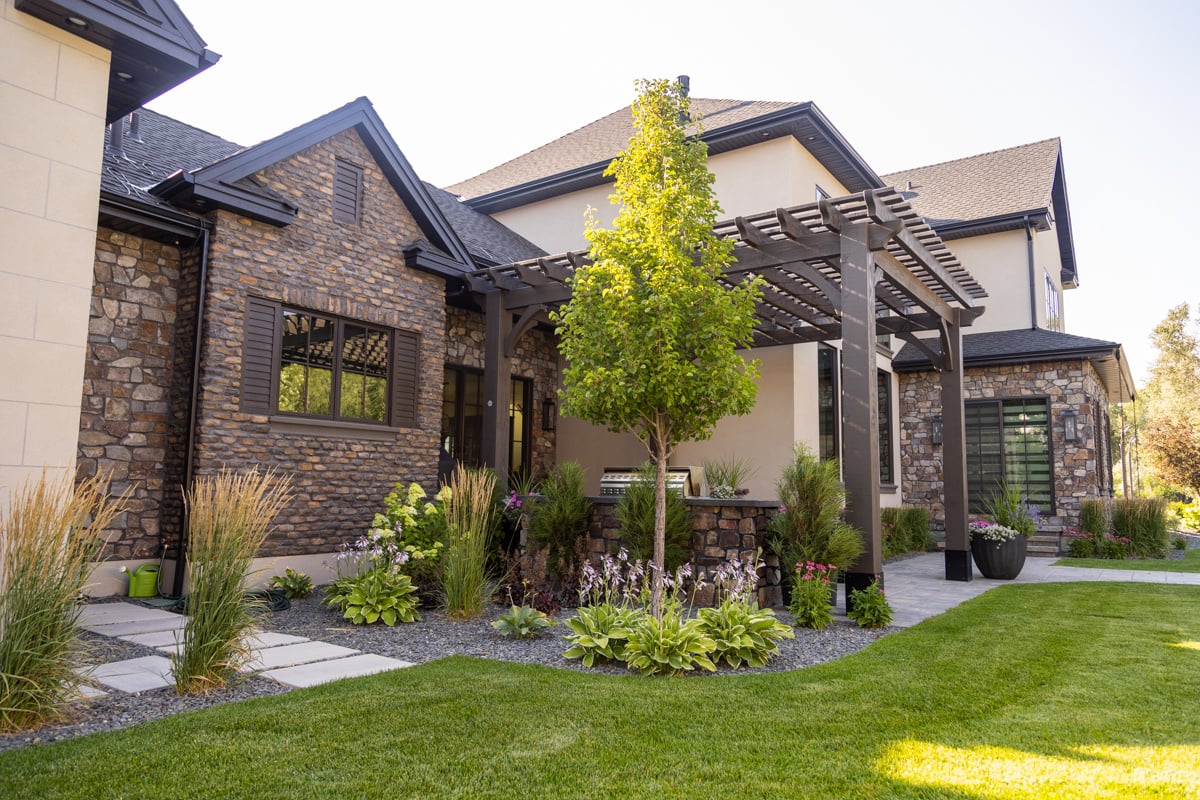
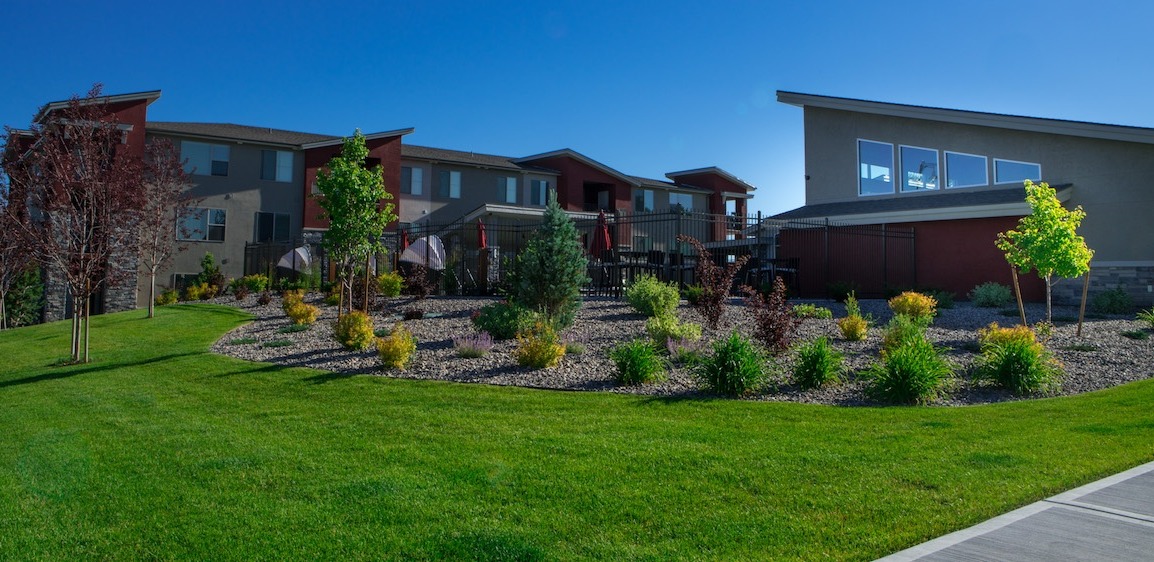
Why Waste Water? Your Guide to Smart Irrigation
It’s easy to take water for granted.
There it is, always ready when we need it, flowing from our faucets and spraying out over our green lawns.
Too bad we’re wasting a lot of it, for no good reason.
Experts at the U.S. Environmental Protection Agency estimate as much as 50 percent of water used for landscape irrigation is wasted.
Hoses and sprinklers spray water all over the place — not just where it’s needed. We forget to turn our sprinklers off, so they chug away for hours, or water in the rain. Outdated sprinkler heads spray up to four times more water than your landscaping really needs.
That’s a lot of wasted water — and money. It’s time to end all that.
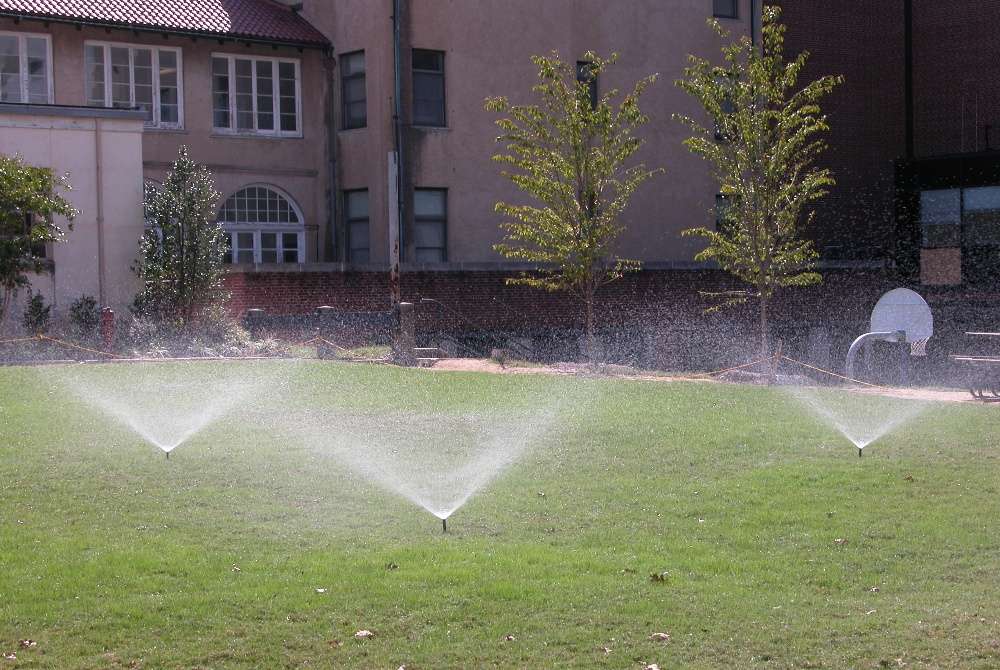
Here at Outback Landscape, we have lots of ideas, from installing an irrigation system and using smart irrigation controllers to choosing plants that require less water and falling in love with mulch.
We can sense your water bill decreasing already
First Up: The Beauty Of Irrigation Systems
If you don’t already have an automatic irrigation system, it’s a great first step to saving water.
Why?
An irrigation system distributes water only where your landscape needs it, dramatically reducing wasted water.
We know how much you love dragging awkward hoses and sprinklers around, but they just aren’t as efficient, often spraying water where it isn’t needed — like your driveways and sidewalks.
Ever forget to turn your sprinkler off, and it sprayed away for hours? That’s a huge waste of water.
An irrigation system prevents this waste. The sprinkler heads are placed precisely, so they target only your lawn, flowers, and shrubs. Timers shut the system off automatically, so you don’t have to worry about it.
That saves water, which saves you money.
Smart Irrigation: The Wise Way To Water
Today’s irrigation systems are smarter than ever.
What is smart irrigation? Smart irrigation controls tell your system when to turn on and off. They don’t start up based on time of day but hone in on local weather forecasts and your exact landscape conditions, so the watering schedule is precisely right for your landscape.
That means you don’t have to worry about your watering schedule — the smart controller is on top of it.
The result? You use as little water as possible while your landscape thrives.
Need to adjust something? No need to trek out to the garage. Handle it all from your phone, tablet, or computer. Set up and adjust your sprinkler system from anywhere, anytime.
Following The Forecast
Smart irrigation controllers will automatically skip or temporarily postpone a watering based on certain triggers we can set, including wind speed and temperature.
Rainfall yesterday?
The controller will automatically skip today’s watering cycle. And no more realizing your sprinklers are squirting away during a rainstorm. Smart irrigation systems check in with local weather stations. If rain is in the forecast, it will hold off on watering, knowing nature will do it for you.
Strategic Sprinkling
When we install an irrigation system, we place each sprinkler head for a specific reason. From the spacing to the type of nozzles, everything is custom designed for the area, so just the amount of water sprays — but no more than necessary.
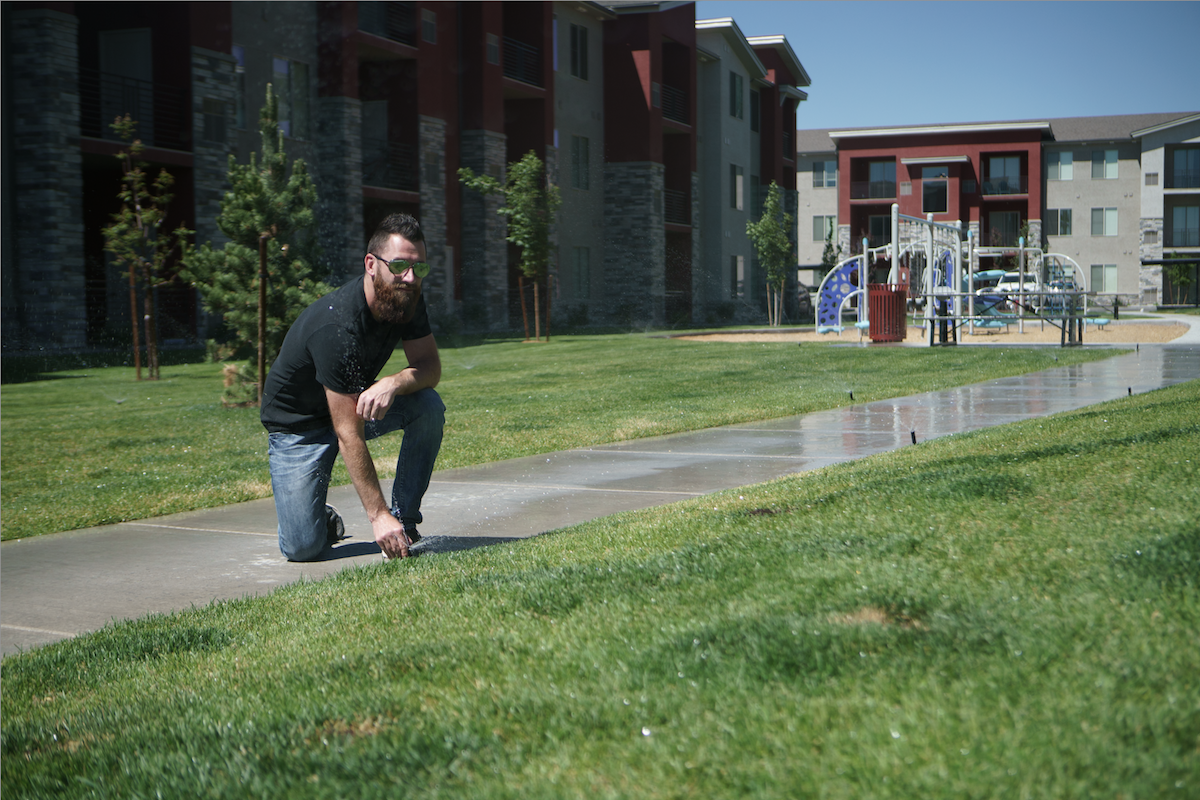
Water-saving nozzles use less pressure, so you use less water. It’s the most strategic watering you can get.
If some areas of your property need more water than others — new landscaping or a freshly seeded lawn — automated sprinkler systems can be adjusted to provide only those areas with more water, preventing unnecessary waste.
And with these brainy controllers, we can even log in remotely to make any adjustments, as needed.
Water-Saving Wonders
We turn to the latest in water-saving technology when we install new irrigation systems.
- The best sprinkler misters deliver the right amount of water to annual flower beds, without overwatering. The water droplets are larger, too, which means more water gets to your plants — not carried away by the wind.
- Tight spaces, like a narrow, 20-inch mow strip, are a challenge, as no sprinkler heads are designed for such a tight space. They would overspray, wasting water. So we bury a soaker hose underground. It delivers the exact amount of water needed with no waste. And cars parked along the curb don’t get sprayed with excess water.
- High-efficiency rotator sprinkler heads are water-saving wonders, using much less water and water pressure than traditional fan-shaped sprinkler heads. While a typical 10-foot fan nozzle uses 4 or more gallons of water a minute, a high-efficiency rotator uses just 1/2 gallon of water a minute.
- Smart irrigation controllers automatically adjust watering, looking at the weather forecast and past history to make sure just the right amount of irrigation is applied.
It’s Irrigation Installation Day!
Can’t live without an irrigation system any longer? Before irrigation technicians show up, it helps if you do a bit of planning.
Do you think you might expand your garden in the future?
It helps irrigation installers to know now where you might expand. We can install the valves and pipes now, then cap them to activate later. That means we won’t have to tear up your yard later in order to add on.
You’ll appreciate that when the time comes.
Decide where you want the controller. We typically install them outside the house or in the garage. Be aware it needs to be within 3 feet of an electrical outlet.
And if you decide to put it in your garage, it has to be on an outside wall with dirt access so we can bury the wire — not a concrete pad or sidewalk— so we can run the lines.
Maintaining An Irrigation System
You’ll get the best water-saving work from your irrigation system if you keep it working efficiently. What does it need?
Winterization
Irrigation system winterization is crucial in cold weather climates like Idaho. Freezing temperatures can quickly destroy an irrigation system that wasn’t properly winterized. It’s crucial to remove all the water from the pipes, valves, and sprinkler heads.
If pooling water freezes and expands, your pipes break.
Freezing water in the backflow assembly will damage the internal components, including cracked or frozen valves.
Professionals have the right equipment and skills to remove all the water from your irrigation system.
Even if you think you’ve drained out all the water, some water remains and can freeze, expand, and crack the pipes. Household compressors may have enough pressure, but they simply cannot put out the volume of air to remove the water.
It’s a good idea to have irrigation technicians inspect your irrigation system one last time before winter, anyway. If it needs any minor repairs, we can take care of it now. Then your system will be ready to roll once spring arrives. This brings us to….
Spring Sprinkler Start-Up
Winter can be rough on all of us — including your irrigation system.
Spring start-up irrigation maintenance makes sure everything is working properly and is ready for a new season of efficient watering.
Sprinkler heads get clogged with debris over the winter or bumped by snow plows. When the holes are clogged, water sprays erratically and is wasted. We clean out clogs and replace any damaged nozzles.
Our irrigation technicians will turn on your water, check each zone of your system, and take care of any fixing, adjusting, or replacing.
Water Wizardry: When? How Much?
If you want to save water, pay attention to the time of day you irrigate. The best time to water your lawn is early in the morning before you lose water to evaporation from the bright sun.
An automatic irrigation system can be set to run in the very early morning — while you’re still snoozing — so your property gets the watering it needs without unnecessary waste.
Plan to water three or four days a week. And water deeply, from at least 30 minutes to an hour and 15 minutes, depending on conditions. Long, deep watering is better for your grass roots than daily shallow watering for just a few minutes.
If you water often, but for short periods of time, like 10 minutes a day, you’re encouraging shallow roots, weakening your lawn.
Don’t Forget To Adjust Your Timers
A smart irrigation system makes watering so simple, it’s easy to just leave it alone and forget it. But to really save water, you need to adjust the timing with the seasons.
Once the cool weather of fall sets in, your landscaping doesn’t need as much water as it does in the heat of summer. And less water evaporates — another reason you need less.
Don’t Ignore your timer, or you’ll end up watering at peak summer output year-round.
Picking The Perfect Plants
We know — everybody loves hydrangeas. But the fluffy beauties are real water hogs. In the quest to use less water, the plants you choose can make a huge difference.
Native plants are they hardy and less susceptible to pests and diseases. They also need less water than non-natives.
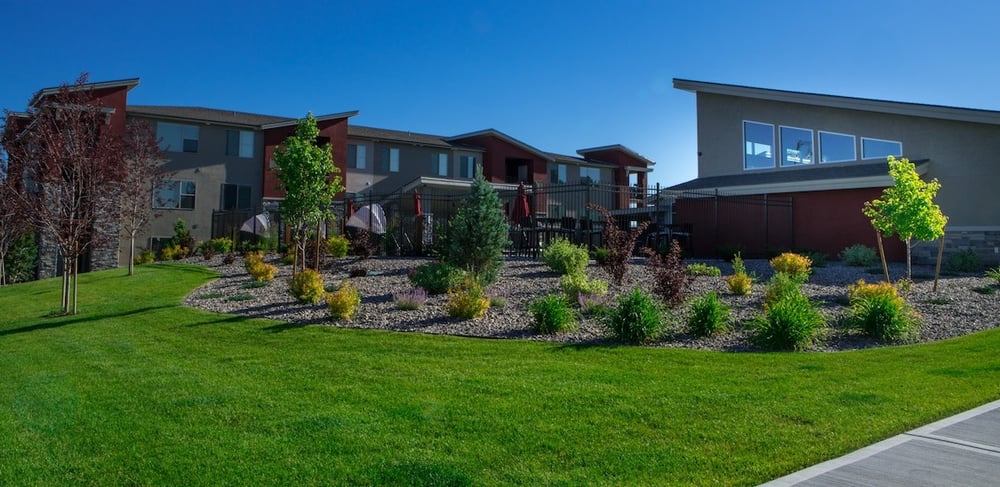
Once these sturdy varieties are established, they can typically get by with natural rainfall, saving you plenty of water.
You don’t know an elk sedge from a bottlebrush squirreltail? Ask us. The Idaho Native Plant Society has lots of recommendations, too.
Red-osier dogwood is valued for its stunning red twigs in winter. Blackbead elderberry, with early clusters of small white or cream flowers. Rocky mountain ash, with its bright orange-red fruit, attracts birds. Creeping Oregon grape, which sports evergreen, holly-like leaves, clusters of bright yellow flowers in spring, and waxy blue berries in summer. The lacy, delicate maidenhair fern.
You get the idea.
Here at Outback, we love ornamental grasses, which are great low-water plants. We recently landscaped a retaining wall with a thousand ornamental grasses in rows of different types and heights. It makes for a spectacular display but only needs light watering with drip irrigation.
Before, property owners were dumping a huge amount of water to keep the traditional lawn green and healthy.
Plant choice makes a huge difference.
Everybody Line Up
Save water by grouping your plants according to their water needs. Plant in “hydrozones,” which sounds very sciency, but just means grouping plants with similar water needs. That way, you can water each zone’s specific needs. Turf needs more water than shrubs. Annuals need more than native perennials. Why waste water on plants that are actually saying, “No, thanks.”
Topping It All Off
Don’t forget the mulch. Not only does a nice layer of shredded bark mulch look great topping off your planting beds, it really conserves water.
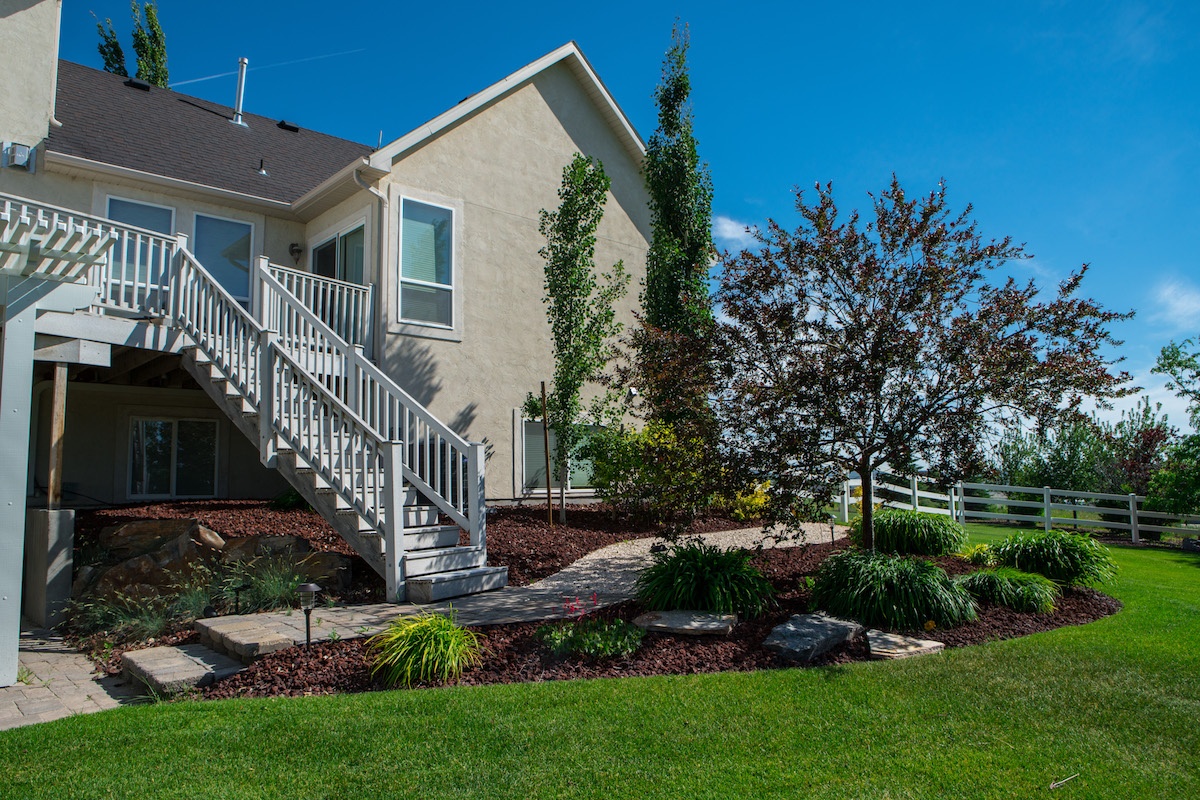
Mulch protects your soil, holding in moisture. That means you’ll have to water less than if you left beds bare. Mulch reduces evaporation, inhibits weed growth, keeps the soil temperature even, and prevents erosion.
For the best water-conserving mulch, choose bark mulch, as opposed to rock. Not only does it hold in moisture better than any other type of mulch, but it also breaks down over time, adding beneficial nutrients to your soil. And better soil hangs on to water longer.
Reining In the Rain
Mother Nature offers free water every time it rains. Why waste it? You’ll use less of your own water if you supplement it with rainwater harvesting. You’ll reduce your water bill, as well as the runoff that would otherwise flow into the street.
The simplest way? Just divert your downspout into a covered barrel. Covering it is important, to keep children and animals out and to prevent mosquito breeding.
Then, use that water for plants, washing your car or other outdoor needs.
Go a step further and incorporate a rain garden that captures rainwater from roofs, driveways, and sidewalks and reduces runoff by allowing stormwater to slowly soak into the ground.
Looking for Irrigation Services in Idaho Falls? Give Outback a Call
At Outback Landscape, we’re irrigation experts. That means we stay on top of the latest technology designed to use water effectively and efficiently, using as little of this precious resource as possible.
Beyond the tech, we know what plants will look great in your landscape without needing a lot of water. We can set you up with high-quality, attractive mulch that will keep the moisture in your planting beds so you have to water less.
We can conduct an irrigation audit to see where you can improve your water conservation.
Hydrozones? Rainwater harvesting? Seasonal timer setting? Rain gardens?
You bet. We’d love to be your partner in water conservation.
Located in Idaho Falls, Idaho, we serve residential and commercial properties in Idaho Falls, Rexburg, and Pocatello, Idaho, as well as Bonneville, Madison, and Bannock counties.
If You're Looking For a Sign, This is It.
Seriously, that lawn isn't getting any better on it's own. Mrs. Jones just called the HOA on you
.jpg?width=480&name=Chase%20Coates%20Team%20Portrait%202%20(2).jpg)
Chase Coates
Chase Coates is the owner of Outback Landscape in Idaho Falls, Idaho.

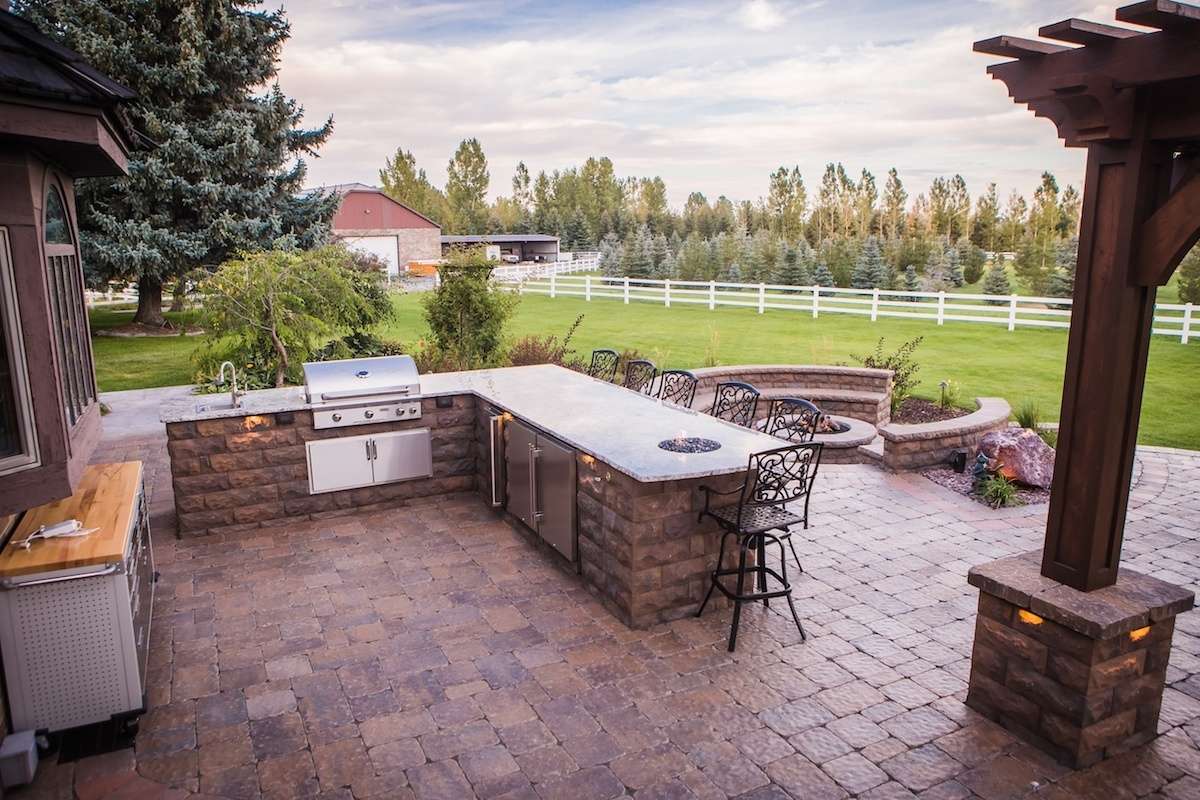
Brick Pavers vs Stamped Concrete: Pros, Cons, and Costs
.jpg)

